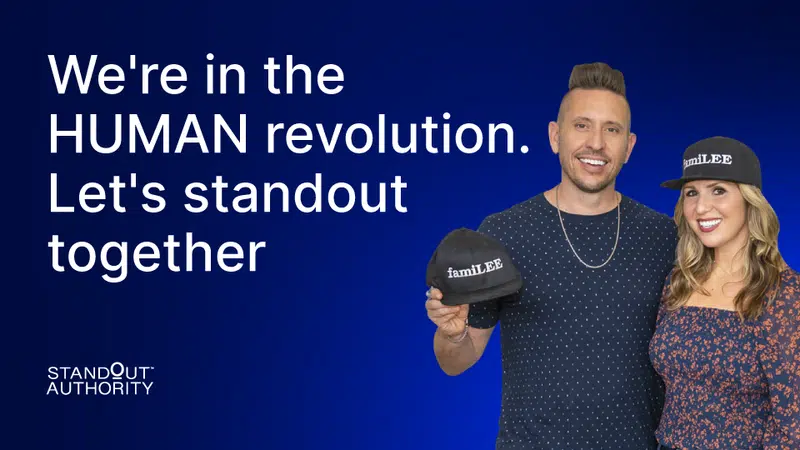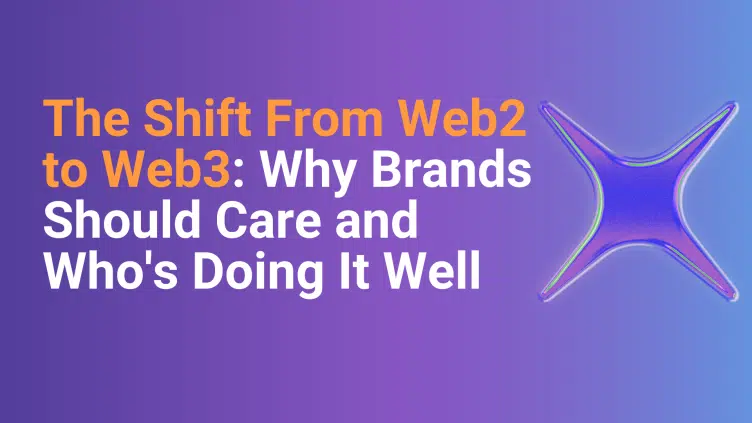
The internet you use every day on your desktop and mobile is changing fast. It’s called Web3. We’ve been running in a Web2 world, but Web3 is quickly on its way to becoming the new norm, and I don’t want you to be behind.
Are you having conversations about Web3 with your marketing teams? What about product teams? Anybody!?
Let’s delve into what that really means for your brand, and how you can start thinking about Web3 for your business today.
What is Web3 versus Web2
Web 3.0 is the next iteration of the internet. We’re not talking about a new Google or social media platform — the entire paradigm we operate on is going to change.
Before Web3, there was Web2, which we still run on today, and even before that was Web1. I like to compare the Webs like this (VERY oversimplified but helpful):
Static web pages, Netscape and Encyclopedia Britannica = Web1
Interactive websites, social media, advertising, Google, Facebook = Web2
Blockchain, crypto, Decentralization, NFTs, coins = Web3
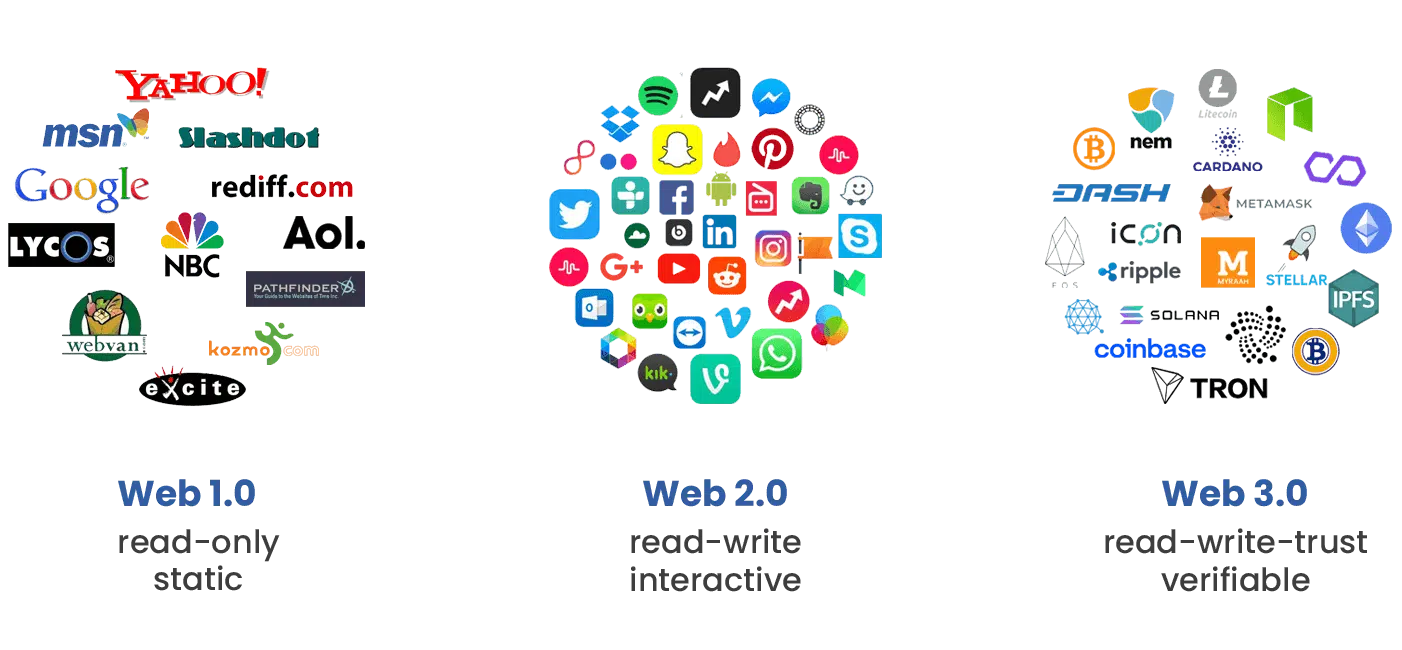
So, how can we possibly change from here? Is something more life-altering and society-shaping than social media on the way?
Sort of.
Web 3.0 will build upon existing technologies, namely emerging artificial intelligences and decentralized blockchains. Combined, they’ll create a semantic web, a place where information is more readily shared, transmuted, and diffused among communities and programs. The biggest way Web3 will shape business (and the world) is through its alteration of web protocol. Online privacy policies will massively shift thanks to Web3’s roots in personalized, targeted experiences.
The internet is going to become smarter and more secure, adapting to each person and providing them with search results, ads, and site recommendations based on their unique queries and personalities.
What’s blockchain have to do with it?
One of Web3’s most notable features will be the decentralization of information. This means that instead of companies holding all of your data, each web owner will have their own Web3 wallet that stores all of their data.
When you log onto a platform, you “open” your wallet to store your session data. When you log off, you “close” your wallet, taking your data along with you. Now, because you own the data, you’ll be able to decide what to do with it — including selling it. Your personal information will be hidden from companies, but your activities will still be visible.
This is a major shift from the current model of data collection, a major concern among web users that’s led to the now infamous Facebook data privacy scandals. Think about how many companies are built on leveraging our personal data…all those personalized ads? How do you think that happens? That’s all about to change and will turn many products and services upside down if they don’t start to think Web3 experiences.
Why should brands care?
I really loved this Gartner Hype Cycle report that shows all the aspects of Web3 and where we’re at. As you can see, it’s still very early days but a lot of progress is happening right now and you have the chance to be a part of the ideation, creation and innovation.
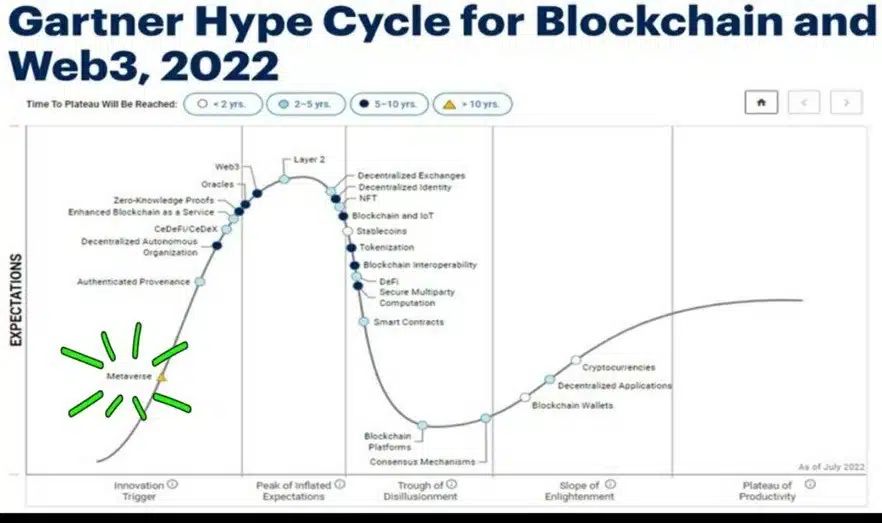
As you try to wrap your head around Web3, really think about ownership. Think about all the processes we go through that have multiple intermediaries. Like buying a car or house. When you’re buying a house, there are multiple bids. Loan officers. Buyers. Sellers. Banks. Titles. It’s a mess. But in a Web3 world, you find the house you want, you either connect your wallet or your online banking in one place, and with a couple of clicks you participate in an online, transparent auction. If you need a loan, you apply and get approved within the auction process, instantly.
This seamless experience is what every industry and every brand must be thinking about. There will be many companies that will not be in business in 10 years because they’re purely intermediaries. If something can be made a digital asset without your help, you’re out.
The opportunity is to find ways that give ownership to your customers, put them at the driving wheel but you in the passenger seat as their co-pilot. Us brand builders must have transparency and community integrated into our products and services from the start, not 10 years later when you start to think about customer lifetime value.
While we’re very much in a Web2 world for the next 10 years, this is the time to be part of how Web3 is built and lead it. This is the time to test out different aspects of Web3 that you think will work for your business model. You don’t have to go all in but you DO need to know what’s happening and start to think about small test projects whether it’s a NFT, coin, or personal crypto investment.
Great Brand Examples of Web3 Adaptions
No matter which internet we’re living in, the innovators, creators and artists are always ahead of the curve. Some of the best Web3 adaptations I’ve seen are in fashion, music, sports, and film.
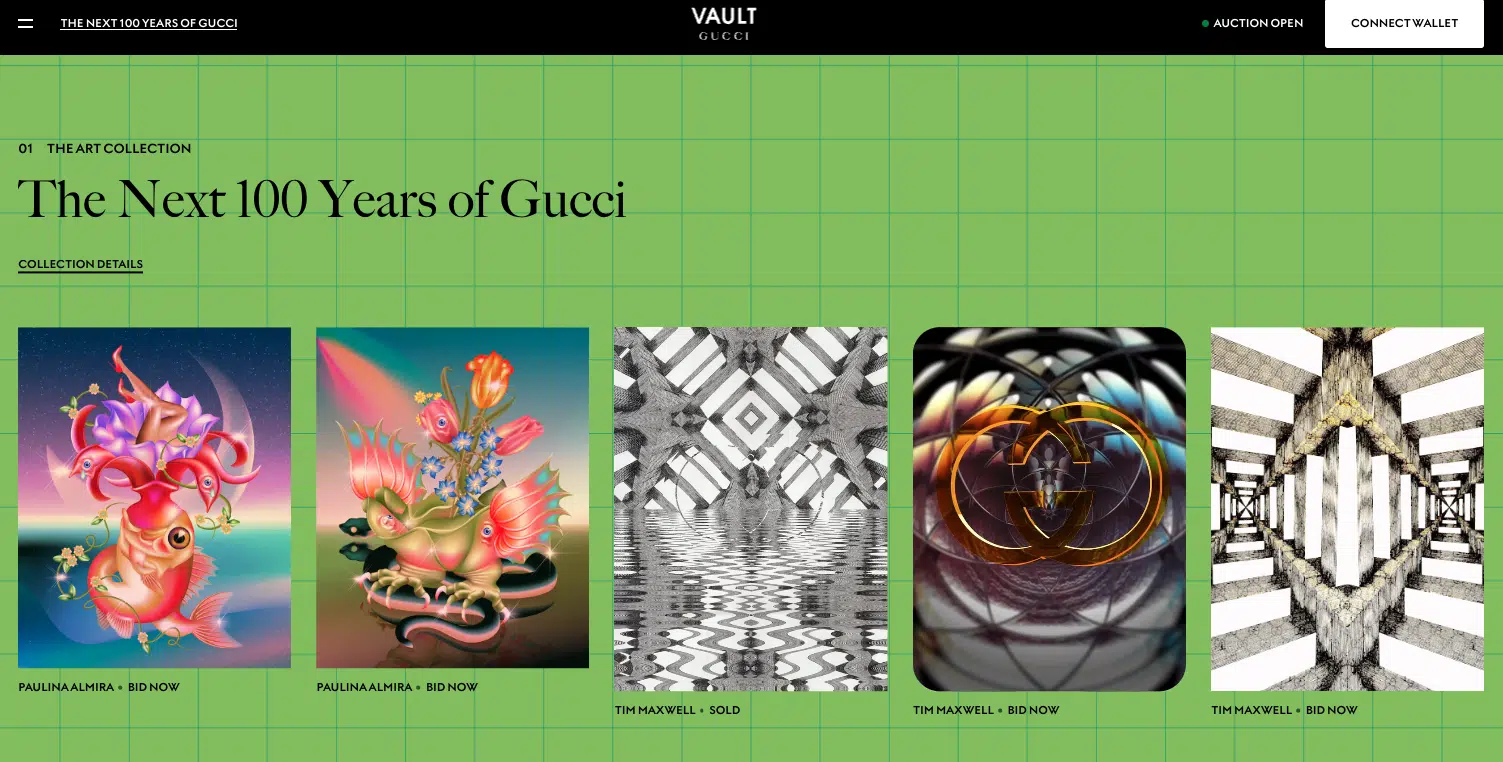
Luxury brands are Web 3 branding pioneers. Gucci, for example, released an NFT film for a fashion collection that sold for $25,000. They recently announced a partnership with SuperRare to launch its Vault Art Space. Having purchased $25,000 in RARE tokens to join the SuperRare DAO, Gucci plans on using the Vault Art Space to hold exhibitions by NFT artists. The brand’s first exhibition is entitled “The Next 100 Years of Gucci,” and will present a selection of NFT artwork, “each a collectible fragment of Gucci’s kaleidoscopic heritage.” The first NFTs from this show became available on June 23, 2022.
I love what Gucci is doing because they’re creating one of kind digital assets way ahead of their competitors. They know what their customers want and are ready to stretch and be different. This example of Web3 branding and marketing is likely to evolve – more businesses will begin linking NFTs with physical perks that inspire people to buy more tokens.
Another cool example is with FC Barcelona who created the ‘In a Way, Immortal’ non-fungible token, which is the first NFT in the club’s history. It celebrates Johan Cruyff and sold for $693,000 at an auction. The audiovisual digital art NFT aesthetically recreates a goal scored by Cruyff, who later became the club’s coach, against Atletico Madrid in 1973.
Talk about fandom and brand loyalty! One of the project’s goals is to redefine NFTs by creating a premium experiential product into a cinematic experience. The future owner of this NFT, who will be called Barça Digital Ambassador, will also be able to enjoy unique Club-based benefits and experiences such as access to training sessions.
Now, you don’t need to offer people thousands of dollars in securities or shell out millions to make NFTs work for your brand. Instead, think of how the convergence between cryptocurrency, Web3, and sales can shape your brand’s strategy going forward.
Opportunities for Brands in the Metaverse
The metaverse is more than just a gimmick by Meta, which was known as Facebook until December 1, 2021. While Meta may share a name with the metaverse, it did not create the virtual reality. Metaverse refers to the fully immersive internet, where we will be able to access augmented and virtual reality and interact with all sorts of environments using persistent avatars and innovative digital technology.
The metaverse is not owned by Meta, or Facebook, or anyone, really. But these platforms will become the primary means of access for brands and consumers going forward.
What does the metaverse really mean for a brand?
It means there’s an opportunity to create meet your customer in a shared virtual space, from their home, and connect with your audience in ways we’ve never imagined. Companies and customers will engage in real time using 3D avatars, similar to characters you’d create in a video game.
Interacting with each other through this medium creates a new form of marketing: direct-to-avatar. You’ll be speaking to customers, but not exactly. It’s the middle ground between face-to-face sales and digital marketing. Marketers will now have to think about someone’s avatar, their physical form and online presence. WOAH.
There are so many cool Metaverse projects. I suggest you follow the Godmother of the Metaverse, Cathy Hackl to learn.

I love what Clinique has done with their ‘Metaverse more like us.’ Clinique celebrates the beauty of all skin everywhere and is partnering with Daz 3D on its mission to make the Metaverse more inclusive. They have a groundbreaking collection of 8,888 female and non-binary profile picture avatars and are bringing forth their brand mission to celebrate our beauty, our self-expression—in any universe.
One other to keep an eye on is Disney who filed a patent for a “virtual-world simulator,” which reproduces one of the company’s theme parks into a 3D realm. Users could then move in “highly immersive individualized 3D virtual experiences without requiring those users to wear an augmented reality AR viewing device.”
In conclusion…
Web3 is not going anywhere. You can’t say you don’t get it or don’t care because it’s happening and I don’t want you to be left behind. Know that communities are fundamental to Web3 branding success and that this next iteration of the internet is more social, more connected, and more user-centric then ever before. Building communities people want to join and interact with will be paramount to brand engagement and growth going forward.
That’s why we built our $SOA Coin and community and want you to join us in this shift to Web3! Let us be your guide and join our famiLEE
